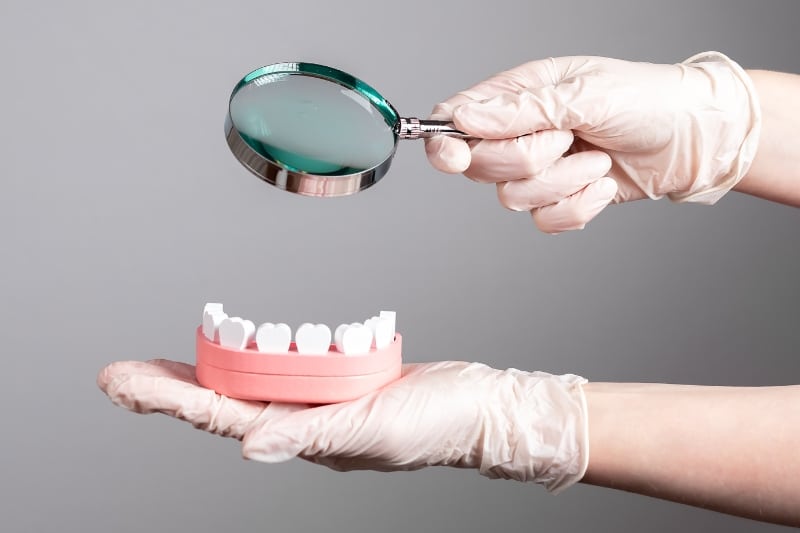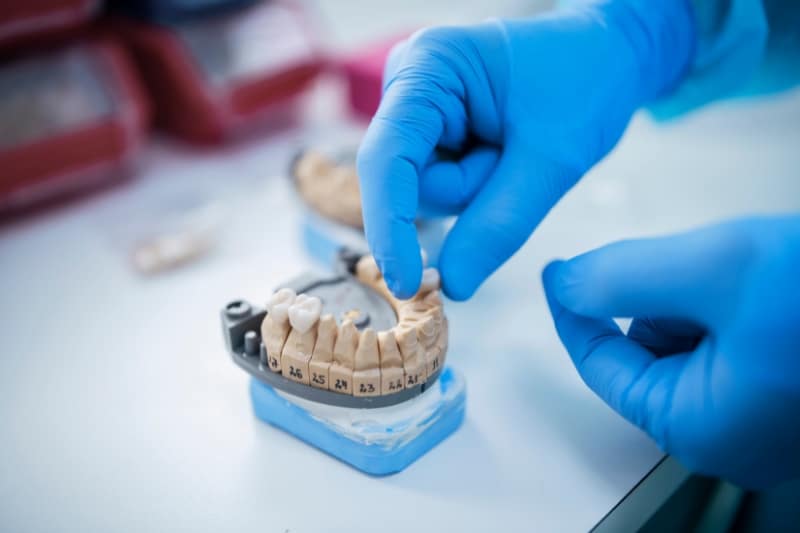
YOUR NORTH VANCOUVER DENTISTS
Dental Bridges
in North Vancouver
Are you considering a dental bridge to restore your smile? We’re located right in the heart of the Lower Lonsdale neighborhood of North Vancouver, a convenient location to offer you a variety of dental bridge options to suit your unique needs. Read further to get a comprehensive overview of dental bridges, their types, the procedure, and how to ensure their longevity, along with insights on costs and insurance coverage.
Key Takeaways

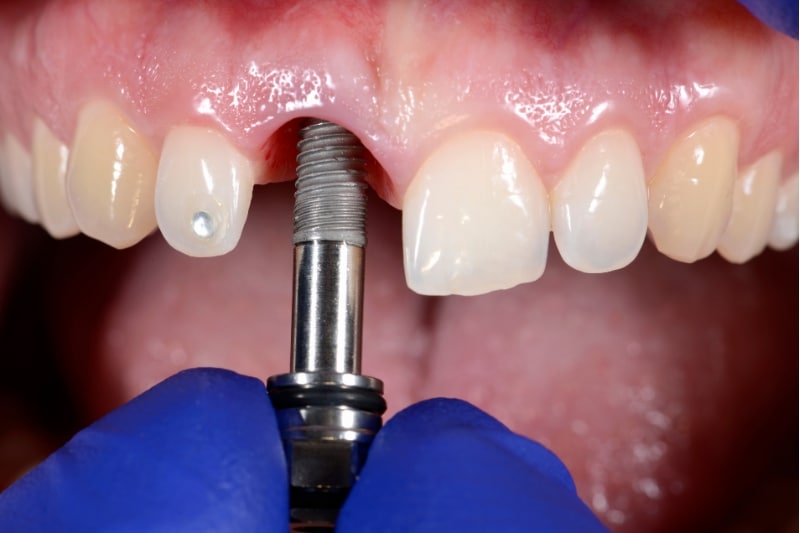
What are Dental Bridges
Dental bridges address the problem of missing teeth effectively. They consist of false teeth, known as pontics, supported by abutment teeth or dental implants, providing both aesthetic and functional advantages. A dental bridge can:
This makes it a popular choice for many patients in the North Shore area.
The benefits of dental bridges include restored chewing and speaking abilities, an enhanced smile, and support for dental implants, offering a strong and durable solution for missing teeth. With several types of dental bridges available, such as traditional, cantilever, and Maryland bridges, you can find the perfect solution for your dental needs near Lonsdale Avenue in North Vancouver.
Definition and Purpose
A dental bridge serves as a prosthetic device, specifically engineered to replace missing teeth. This device comprises one or more artificial teeth, known as pontics, which are supported by crowns attached to the neighboring teeth or dental implants. Dental bridges serve the dual purpose of filling the gaps left by missing teeth, thus restoring both the look and functionality of your smile, which comes with numerous benefits.
Dental bridges work by utilizing pontics to fill the gaps left by absent teeth, thereby enhancing both the appearance and function of your smile. With appropriate maintenance, dental bridges serve as a durable remedy for missing teeth, offering a multitude of benefits such as enhanced practicality, aesthetics, and overall oral health.
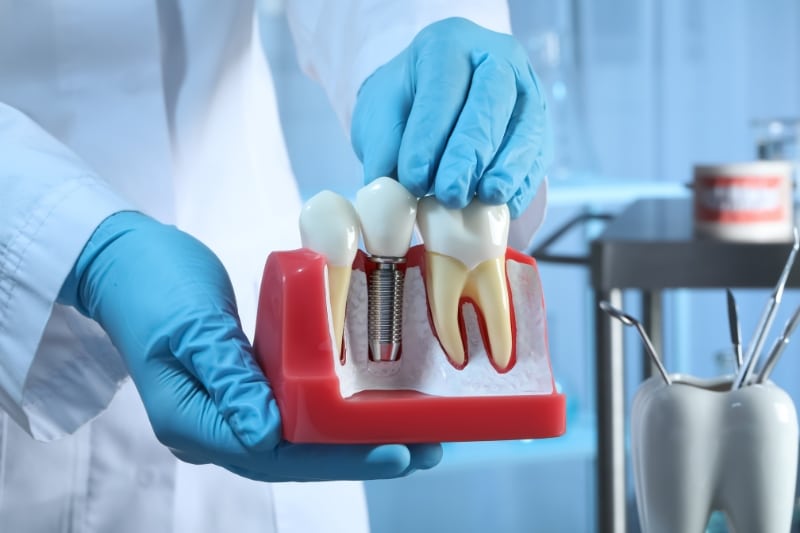

Benefits of Dental Bridges
Dental bridges bring about multiple benefits, including improved ability to chew, clearer speech, and seamless appearance. They enhance the chewing function by replacing missing teeth, enabling you to enjoy a diverse range of foods while maintaining oral health. Additionally, bridges can contribute to clearer speech by enabling proper articulation of words, and they improve your appearance by filling gaps between teeth and restoring your natural facial features.
Furthermore, dental bridges have several benefits:
In the end, dental bridges lead to improved oral health and a confident smile.
Different Types of Dental Bridges
There are four main types of dental bridges to suit varying dental needs:
- Traditional bridges
- Cantilever bridges
- Maryland bridges
- Implant-supported bridges
Each type has its own unique features and requirements, providing patients with a range of options to find the perfect fit for their individual situations.
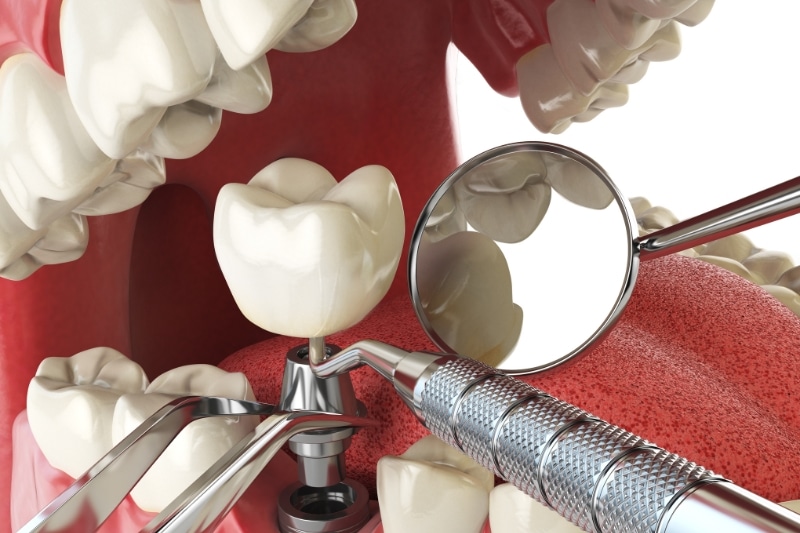
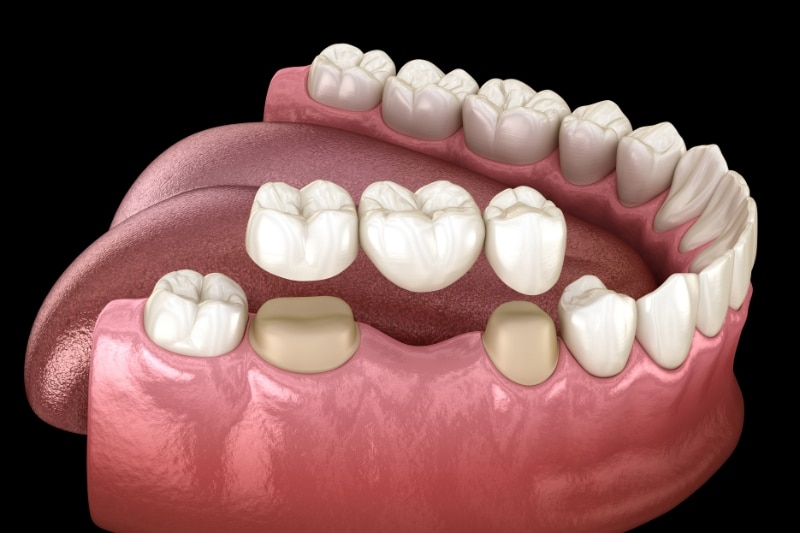
Traditional Dental Bridge
Traditional dental bridges, also known as traditional bridge, are the most common type. They are typically used when there are healthy natural teeth on both sides of the gap created by the missing tooth. These bridges consist of a pontic, supported by crowns placed over the healthy teeth on either side of the gap, restoring both aesthetics and functionality.
The crowns in a traditional dental bridge are typically constructed from materials such as porcelain fused to metal or ceramics, while the pontic is primarily composed of porcelain. To maintain the bridge in place, the crowns are securely cemented onto the natural teeth. When properly cared for, a traditional dental bridge can last between 5 and 15 years.
Cantilever Dental Bridge
Cantilever dental bridges are an alternative option when only one natural tooth is available for support on one side of the gap. In this type of bridge:
Cantilever dental bridges are typically made of ceramic and metal or entirely of ceramic material. Although they are more conservative and effective in replacing missing front teeth, cantilever bridges have a heightened risk of failure and are not as robust as traditional bridges.
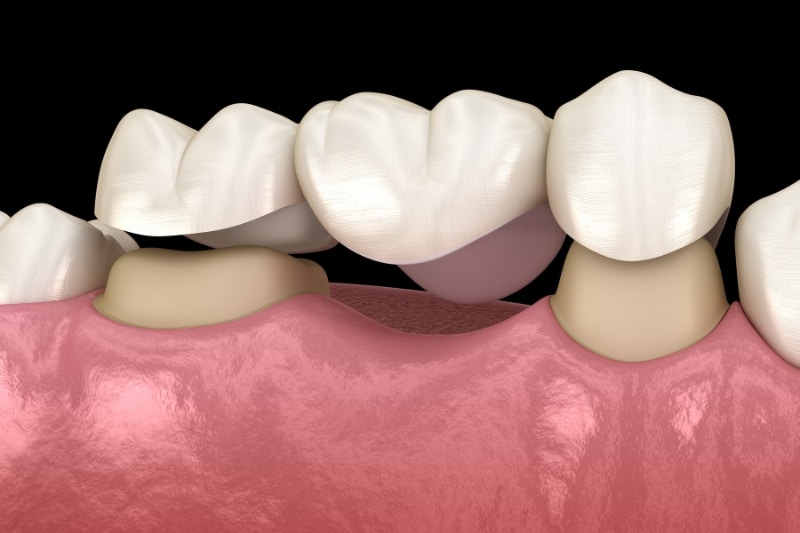
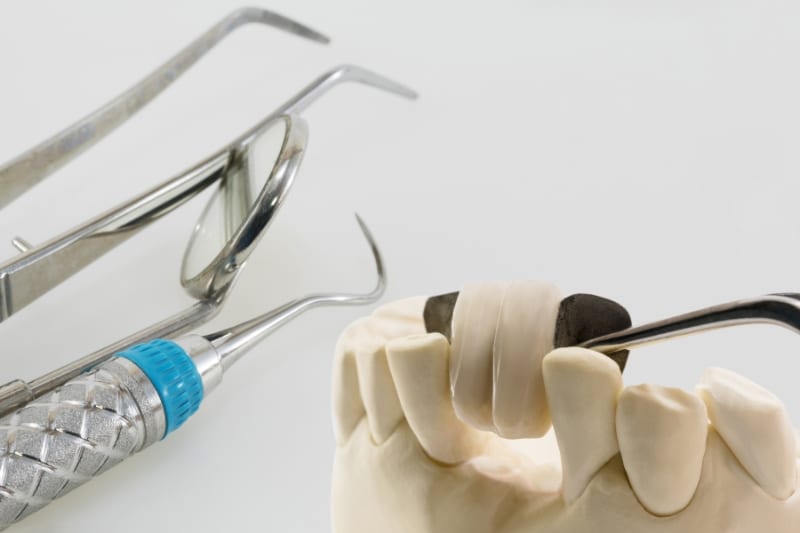
Maryland Dental Bridge
Maryland dental bridges differ from other types in that they utilize metal wings or a porcelain framework, instead of crowns, to affix to adjacent teeth. This type of bridge is only feasible when there is a natural tooth situated on either side of the gap resulting from the absent tooth or teeth.
The procedure for placing a Maryland dental bridge involves lightly etching the back surface of the teeth on either side of the missing tooth. The prosthetic tooth is then attached to the neighboring teeth using a bonding process, eliminating the need for extensive dental work.
Maryland dental bridges typically last between 12 to 21 years, provided proper aftercare is observed.
Implant-Supported Dental Bridge
Implant-supported dental bridges offer a more stable and long-lasting solution by relying on dental implants for support, instead of crowns or frameworks. The procedure for placing an implant-supported dental bridge necessitates two surgeries: first, a dental implant, made of titanium, is drilled into the jawbone and covered with gum tissue, allowing it to fuse with the jawbone for a few months; second, a small incision is made in the gum tissue to uncover the implants, to which abutments are attached, and finally, the bridge is installed on the abutments.
The advantages of implant-supported dental bridges include:
However, the process of obtaining implant-supported dental bridges is longer and more involved compared to other types of bridges, necessitating multiple dental visits and a healing period after implant placement.
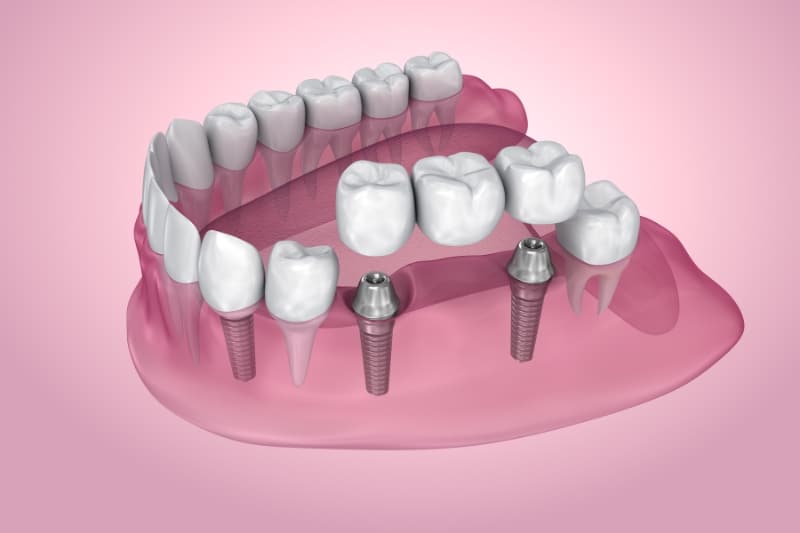

Dental Bridge Procedure: What to Expect
The dental bridge procedure involves several steps, including consultation and treatment planning, tooth preparation and temporary bridge placement, and final bridge placement. Throughout this process, your dentist will work closely with you to ensure the best possible outcome for your unique dental needs.
Consultation and Treatment Planning
During the consultation, your dentist will assess your dental needs and determine the most suitable type of dental bridge for you. This process may involve diagnostic tests such as X-rays, impressions, and bite analysis. Your dentist will consider factors such as retention, support, aesthetics, the health of the abutment teeth, patient expectations, shade matching, cost of the bridge, and any additional procedures when planning your dental bridge treatment.
The consultation and treatment planning session typically lasts around 30-40 minutes and aims to provide you with a clear understanding of the dental bridge procedure and the best solution for your individual needs.
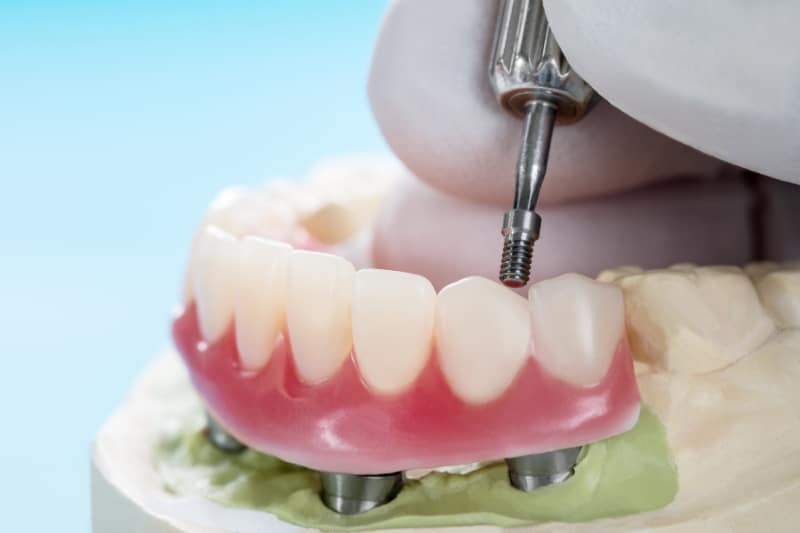
Tooth Preparation and Temporary Bridge
Tooth preparation entails several steps:
- Reshaping the abutment teeth
- Administering local anesthesia
- Placing a temporary bridge to protect the shaped teeth and preserve the space created by the missing tooth or teeth
The temporary bridge serves as a placeholder until the permanent bridge is ready, allowing you to smile naturally without a gap and reducing tooth or gum sensitivity.
Temporary dental bridges are typically constructed using bis-acryl composite provisional materials, acrylics, or self-curing composite crown and bridge materials. They are placed by the dentist to safeguard the teeth and gums while awaiting the permanent bridge, composed of two or more crowns and secured in place with relatively weak temporary dental cement.


Final Bridge Placement
During the final bridge placement appointment, your dentist will:
The dentist’s objective is to guarantee that the dental bridge fits securely and performs correctly.
The final placement of a dental bridge typically requires two visits spread across a period of 3-4 weeks. During this time, adjustments to the bridge may be made to ensure a proper fit and function, including verifying the shade, shape, and position of the artificial teeth and making bite adjustments if necessary.
Dental Bridge Care and Maintenance
Ensuring the longevity of your dental bridge requires proper care and maintenance. By following a daily cleaning and oral hygiene routine, attending regular dental checkups, and avoiding damaging habits, you can keep your dental bridge in top condition and enjoy its many benefits.


Daily Cleaning and Oral Hygiene
Keeping up good oral hygiene is paramount to ensure the extended longevity of dental bridges. Here are some tips to follow:
By following these tips, you can ward off plaque build-up and tooth decay, both of which can result in the deterioration of the bridge.
By thoroughly cleaning both the surrounding and underneath areas of the bridge, you can maintain the health of the abutment teeth and ensure the continued optimum functionality of your dental bridge.
Regular Dental Checkups
Routine dental checkups are paramount for keeping track of the health of your dental bridge and the teeth around it. Such visits allow your dentist to assess the condition of the bridge, identify any problems or damages, and administer the needed treatments or adjustments.
It is recommended that you have a dental checkup every six months when you have a dental bridge. Regular checkups, combined with a thorough oral hygiene routine, are essential for preserving the health and functionality of your dental bridge and ensuring a confident smile.
Avoiding Damaging Habits
To avoid harming your dental bridge, it’s recommended to refrain from using your teeth as tools, gnawing on hard items like ice, pencils, or fingernails, and nail-biting. Such habits could harm your dental bridge, potentially leading to fractures or even dislodging existing dental work.
By steering clear of harmful habits and upholding a meticulous oral hygiene routine, you can extend the lifespan of your dental bridge and continue to enjoy its numerous benefits for the foreseeable future.


Why Dental Bridges?
In summary, dental bridges provide a valuable solution for replacing missing teeth, restoring both function and appearance. With proper care and maintenance, you can enjoy the benefits of a dental bridge for many years to come. By understanding the different types of dental bridges, the procedure involved, and the factors affecting their cost, you can make an informed decision about the best dental bridge option for your unique needs. It’s time to take the first step towards a confident and healthy smile.
Frequently Asked Questions
